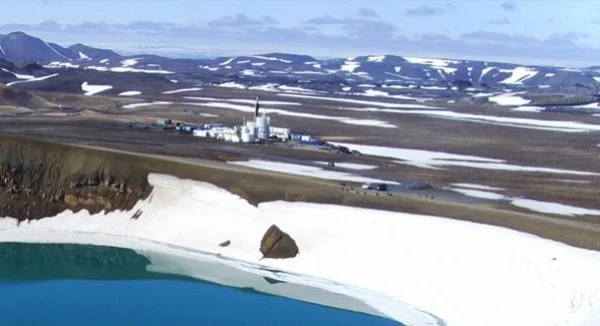Geothermal power development has traditionally been about drilling down into subsurface reservoirs of hot water. Enhanced geothermal is expanding the field to include dry, permeable hot rock where water can be added.
But geothermal in molten magma? That’s pushing the envelope – and it’s happened in Iceland with the Iceland Deep Drilling Project. UC Riverside geologist Wilfred Elders called it a “unique engineered geothermal system … the world’s first to supply heat directly from a molten magma.”

The drilling site (image via IDDP)
Elders, a professor emeritus at Riverside, edited the January 2014 issue of the journal Goethermics, which is devoted to the IDDP project.
“Drilling into magma is a very rare occurrence anywhere in the world and this is only the second known instance, the first one, in 2007, being in Hawaii,” Elders said in a statment. “The IDDP, in cooperation with Iceland’s National Power Company, the operator of the Krafla geothermal power plant, decided to investigate the hole further and bear part of the substantial costs involved.”
First some details on the borehole: Magma was hit at 2,100 meters under the ground (1.3 miles deep). The temperatures were extraordinary – 1650 to 1832 F – far above the 360 F water temperatures required for flash steam’s plant, or the 225-360 F waters that binary cycle plants operate on.
After drilling into the magma, “a steel casing, perforated in the bottom section closest to the magma, was cemented into the well,” according to UCR. “The hole was then allowed to heat slowly and eventually allowed to flow superheated steam for the next two years.”
The result was a monthslong stream superheated, high-pressure steam “at temperatures exceeding 450 C (842 F),” a record for geothermal heat.
All enough to convince Elders that “the success of this drilling and research project could lead to a revolution in the energy efficiency of high-temperature geothermal areas worldwide.”






